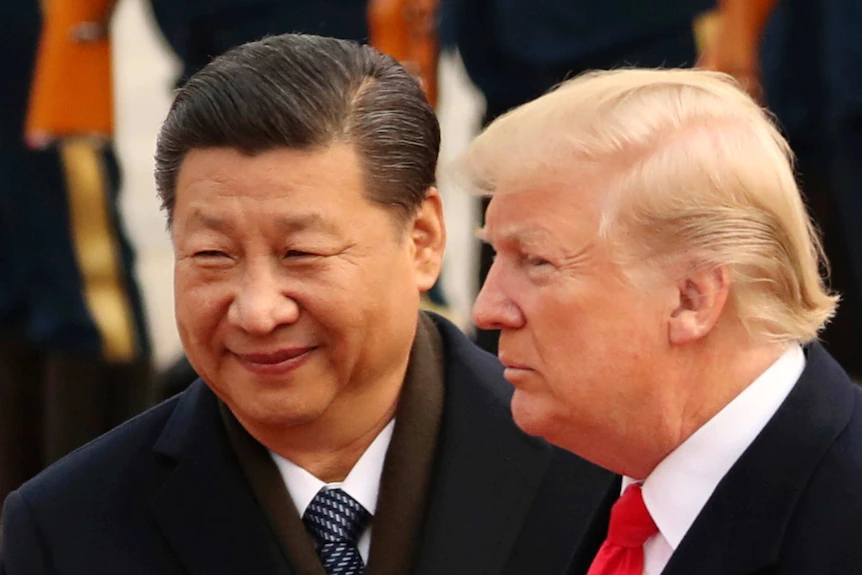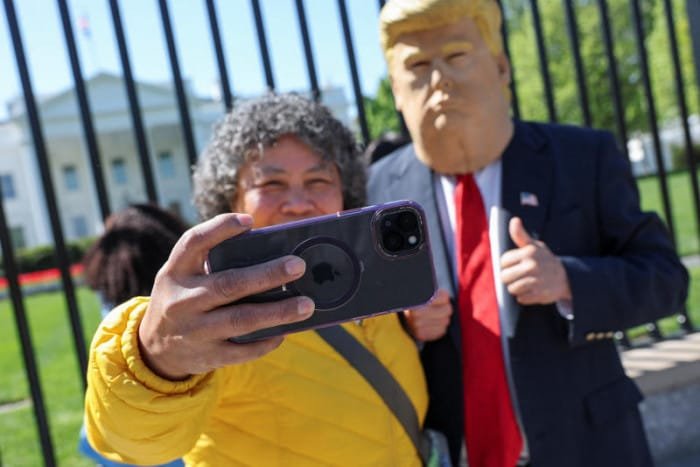Unraveling Trump’s Key Challenges in the Battle with China: What’s at Stake?

Unraveling Trump’s Key Challenges in the Battle with China: What’s at Stake?
In an increasingly polarized world, the rivalry between the United States and China stands as one of the most pressing issues of our time. The intricacies of this relationship touch on economic, political, and military domains, each presenting unique hurdles that the Trump administration faced in its quest to redefine global dynamics. This post delves into the critical challenges Trump encountered in his battle with China—shedding light on what was at stake, the implications of these hurdles, and the broader context of U.S.-China relations.
Understanding the Stakes
The stakes in the U.S.-China relationship can be understood through various lenses:
- Economic Competition: As the world’s two largest economies, the U.S. and China engage in a fierce competition that impacts global trade patterns.
- Political Influence: China’s growing influence in international affairs challenges U.S. hegemony and raises questions about governance and democratic values.
- Military Posturing: From the South China Sea to Taiwan, military tensions continue to escalate, creating a precarious situation that threatens peace and stability in the Asia-Pacific region.
The ramifications of these challenges are profound, shaping geopolitical strategies and affecting millions of lives around the globe. As we explore these dynamics, it is essential to analyze the unique features of Trump’s approach and the potential benefits and drawbacks it entailed.
The Economic Front: Trade Wars and Tariffs
Trump’s administration marked a definitive shift in U.S. trade policy, characterized largely by the imposition of tariffs on Chinese goods. This was a critical part of the broader narrative aimed at achieving a fairer trading system. The idea was to:
- Reduce Trade Deficits: By levying tariffs, the Trump administration aimed to compel China to purchase more American goods, thereby closing the trade gap.
- Protect American Jobs: Industries like steel and manufacturing argued that these tariffs would safeguard jobs from cheaper Chinese imports.
- Address Intellectual Property Theft: The administration claimed to tackle long-standing grievances regarding IP theft and forced technology transfers.
Despite these intentions, the consequences were mixed, leading to trade retaliations and increased prices for American consumers. The effectiveness of the tariffs is still a subject of ongoing debate among economists and policymakers.
Political Tensions: Navigating Diplomacy
The Trump administration’s approach to China was characterized by a willingness to confront Beijing directly, a departure from the traditional diplomacy that often classified U.S.-China relations. Key features included:
- Public Rhetoric and Diplomacy: Trump utilized social media as a platform for his views on China, often making inflammatory statements that complicated diplomatic engagements.
- Collaborating with Allies: The administration sought to rally allies against China’s influence, emphasizing the importance of strong coalitions in confronting shared challenges.
- Human Rights Concerns: The rhetoric surrounding issues like the treatment of Uighurs in Xinjiang and the situation in Hong Kong became central to the discourse, influencing not only bilateral relations but also America’s standing on the global stage.
While the administration’s approach resonated with a segment of the American public concerned about China’s rise, it also complicated long-term relationships with allies and raised questions about America’s role in promoting human rights abroad.
Military Posturing: The South China Sea and Beyond
Long considered a flashpoint for U.S.-China tensions, military posturing in the South China Sea has been amplified under Trump. The U.S.’s commitment to freedom of navigation operations and military exercises in the region served several purposes:
- Demonstrating Resolve: The U.S. aimed to project strength and assert its commitment to regional allies threatened by China’s expansive territorial claims.
- Bolstering Alliances: By engaging with nations like Japan, Australia, and the Philippines, the administration looked to strengthen partnerships in the face of a rising China.
- Responding to Aggression: China’s militarization of artificial islands prompted a robust response from the U.S. Navy, seeking to deter aggressive actions and protect vital shipping routes.
While this military strategy contributed to a show of strength, it also increased the risk of miscalculation and conflict in a region where tensions are already high.
The Influence of Domestic Politics
Trump’s challenges in managing U.S.-China relations were not solely external; they were deeply intertwined with domestic politics. The narrative surrounding China’s influence often played into broader themes of nationalism and protectionism domestically:
- Political Divisions: Political disagreements about the U.S.’s China strategy reflected deeper ideological divisions within America, complicating a unified approach.
- Economic Pressures: The impact of tariffs and trade policies on specific industries created a landscape where political loyalty became transactional—pitting business interest against national interest.
- Election Considerations: As the 2020 election approached, Trump’s framing of the China issue became a cornerstone of his campaign strategy, influencing public perception and voter mobilization.
The Future of U.S.-China Relations
Understanding Trump’s challenges is vital not only for grasping what happened during his administration but also for predicting the future trajectory of U.S.-China relations. As new administrations arise, the legacies left behind shape policies in profound ways. Key considerations include:
- Sustaining Economic Competition: Will the next administration continue the trend of aggressive policies toward China, or will there be a pivot back towards collaboration?
- Navigating Global Leadership: How can the U.S. position itself as a leader in international settings while also addressing complex issues of human rights and trade?
- Addressing Climate Change: As the world faces pressing environmental challenges, will the rivalry hinder collaborative efforts essential for combating climate change?
Conclusion
The challenges that President Trump faced in the battle with China were complex and multifaceted, with profound implications for both nations and the world. From economic negotiations to military confrontations and the shifting landscape of domestic politics, each element plays a crucial role in understanding the dynamics at play.
Ultimately, grappling with these challenges is not solely about attributing blame but about learning and evolving as global citizens. The discussions around U.S.-China relations will continue to shape policies and influence lives, making it imperative for us to stay informed and engaged.
For further insights on this topic, you can explore our related articles on BizTechLive that delve into the various facets of international relations, trade wars, and geopolitics.
Additionally, for an in-depth analysis of the economic implications, visit The Economics of U.S.-China Trade Relations by the International Monetary Fund, or read The Asia-Pacific Power Dynamic by the Council on Foreign Relations.
As we navigate the complexities of global affairs, let’s ensure we remain engaged and informed, fostering a world built on understanding and collaboration amidst challenges.






